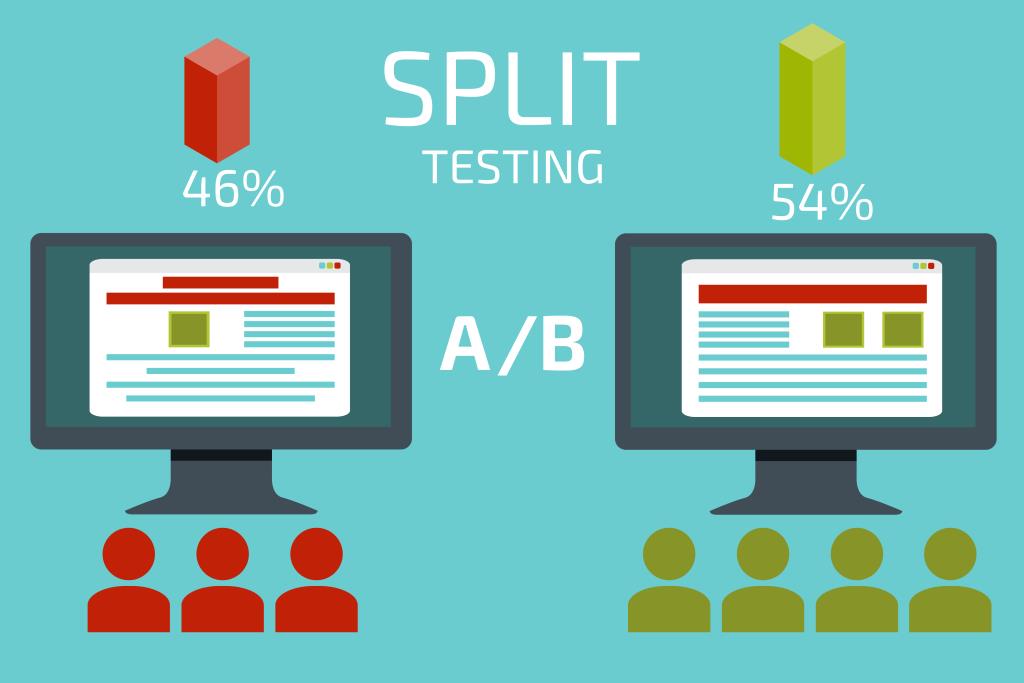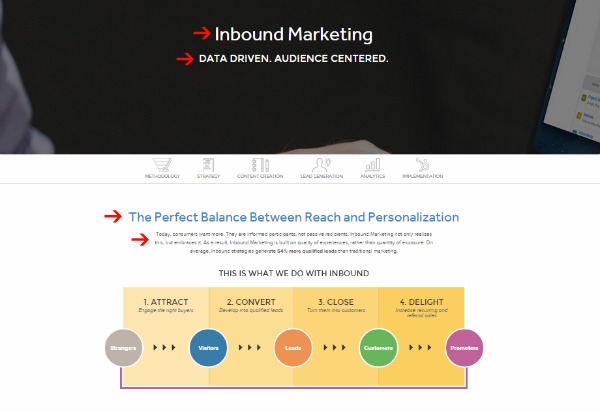With the rise of data-driven marketing, A/B testing (AKA ‘split testing’) is a hot topic in the digital marketing space. In simple terms, split testing refers to the process of testing one piece of web content against another similar piece of content to reach the same goal. The piece of content that reaches (or comes closest to reaching) the goal in mind will inform future content.
For example, you might A/B test an email marketing campaign by sending the same email to all customers, but modifying part of the email’s subject line for half of the recipients. To stay efficient, it helps to lay out your A/B test beforehand:
What is the goal? More email newsletter opens
What are you testing? Two email subject lines
What is the desired outcome? increase in email open rate for one subject line
You can set any goal you like, as long as it's measurable. A few examples of goals to achieve through an A/B test are: generate more leads through a contact form; increase conversion rates on a certain product page, or simply keep website visitors on a specific page for longer.
The outcomes of your goals can be influenced by any number of factors – for better or for worse. But that's where A/B testing comes in. It is the most effective way to break down a whole web page into different, much smaller parts.
This is why split testing is ideal for determining which elements specifically impact the performance of your web pages, whether positively or negatively, and optimizing accordingly.

A/B Testing Basics
Let’s say you wrote great web content for a product you sell online. What makes it great? And how do you know it's great if you've never tested it?
It's my most visited web page! I look at Google analytics all the time!
Both important points. But unfortunately, website traffic does not mean you have good content or optimal design, and Google analytics is far too broad to measure something as specific as page effectiveness.
However, since your website contains a number of elements that can be edited, it's perfect for A/B testing. I took a couple screenshots of Hudson’s Inbound Marketing page to show you some elements our digital marketing team has tested, but in general you’ll want to look at:
Headline – words which attract attention and summarize the page
Sub Headline – the sentence(s) used to speak to your target audience
Hook – the story you tell to pull the reader into your brand
Body – the facts, features and benefits of your product or service
Call to Action – the words that entice the reader to take action

You can also A/B test visual elements
Header image – colors, style, layout can all influence reader response
Buttons – size, shape and position can increase (or decrease) click through rate
Additional images/icons – design, color and content all impact engagement
Additional website elements you can A/B test
Font – is the font easy to read? Is it brand-consistent?
Word count – are your readers attentive or falling asleep as they read?
Page layout & design – how busy is your website? Do you need fewer distractions?
While split tests can be really helpful and (and for my fellow nerds, even fun!), they also take a reasonable level of digital marketing knowledge to set up correctly. The biggest and most common mistake novice A/B testers make is testing too many variables at once. It’s important to choose only one. Otherwise, you won’t know which content caused your outcomes, and you'll be back to square one.
Also see: Beginners Guide to Digital Content Marketing. Read here.
Wondering how to start split testing your website today?
If you’re still a beginner, keep it simple. Keep in mind that the point of split testing is to continuously improve user experience and conversion rates. It's a slow and steady process.
To begin, you should test one minor page element alongside another. This creates a simple A/B test that is easy to evaluate. For example, create two similar landing pages and change the heading only.
Top 5 Tips for Customizing Your Pickup Truck
How Can I Customize My Pickup Truck? Top 5 Tips
While these headings are similar, subtle differences (question vs. statement form) can make a big difference. Direct some traffic to your pages and see which one has a lower bounce rate (this is where Google analytics helps!). From there you will know which heading resonated with your users, and this will inform the future headings you create.
Once you discover the best way to address your customers, you can move on to another element, like image or call-to-action button placement.
Why A/B Testing Works
Simply put, A/B testing takes a lot of the guess work out of your digital strategy. Continue to carry out split tests as you gain more website traffic. Split testing should be a continual and ongoing part of any successful online marketing campaign – one that puts the user first. Keep testing, keep improving and keep learning.